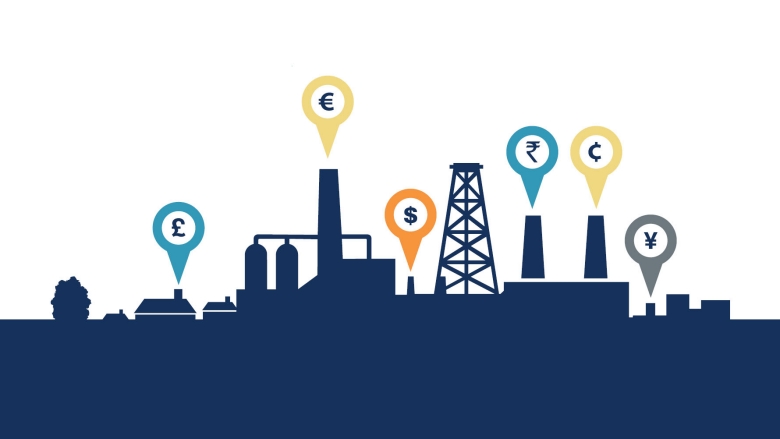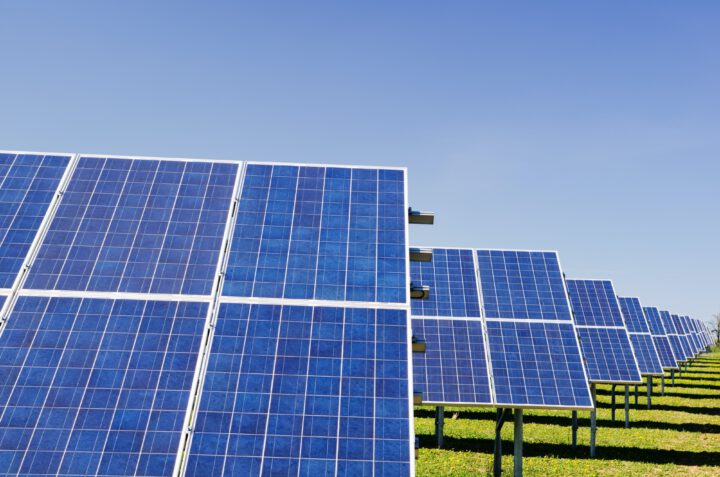Last Tuesday (23 Feb 2021), CNN reported that a solar panel in space is collecting energy that could “one day” be beamed to anywhere on Earth. According to the news, the pizza-box-sized solar panel was sent to the space back in May 2020 by scientists working for the Pentagon, and now it’s successfully tested as a prototype for a future system to send energy from space back to any point on Earth.
We don’t know when would that ‘one day’ be, but obviously we can’t jump from fuel to solar or any other clean energy with just a snap. It’s more likely to take place as a form of energy transition revolution.
And today we would like to take this chance to explore various factors such as policy making, technology and ESG investment to see what are the roles these factors play to empower the energy transition process.
Economic vs Environmental
According to the UN, human population could reach 11 billion by 2100. There will be more homes to deliver, more cars to run, more factories to power, which means more energy demands. And more energy demands result more carbon dioxide emissions, which would lead to more severe climate crisis.
This leaves society with the challenge: How does it meet the growing demand whilst reducing carbon dioxide (CO2) emissions?
Thanks to the Paris Agreement, the world is setting a goal to achieve a balance between emissions that are remaining and the removal of CO2 from the atmosphere. Many countries have set their net zero carbon goals.
China is expected to achieve carbon neutral by 2060, and many Asian countries have followed China’s footstep. Across the globe, EU has always been leading as regards to environmental policy and green taxonomy.
And after EU leaders reached an agreement on more ambitious emission cut by 2030, the price of benchmark EU carbon permits rose to $31 per ton in December 2020, and kept rising ever since.
Carbon Pricing
Carbon pricing is an increasingly popular mechanism that harnesses market forces to address climate change by creating financial incentives for companies and countries to lower their emissions either by switching to more efficient processes or cleaner fuels.

Source: The World Bank
Carbon pricing can take the form of a carbon tax or fee, or a cap-and-trade system that depends on government allotments or permits. Set by governments or markets, carbon prices cover a part of a country’s total emissions, charging CO2 emitters for each ton released through a tax or a fee. In a cap-and-trade system of carbon pricing, the government sets a cap on the total amount of emissions allowed. Emitters are either given permits or allowances, or must buy the rights to emit CO2. Emitters may also be allowed to trade emission credits with each other.
One concern of carbon pricing is whether carbon credits can really help changing our behavior or it is just a financial jugglery that re-allocates money and pollution from one place to another?
With the spike in carbon price in EU, and with China launching the world’s largest carbon market this year, we are still keeping our faith in carbon pricing for the long run.
Technology holds the key
Nevertheless top-down solutions such as setting carbon neutral goals and carbon credits can’t be the only answer. Technology still holds the key to energy transition revolution.
In fact the massive solar industry and wind industry nowadays have the ability to deliver renewable energy projects cheaper than investing in certain fossil fields. It may not be necessary to believe in climate change in order to invest in renewable energy projects. There is already a strong economic argument to make investment decisions.
Technology is also helping power stations and cement factories capture their carbon emissions.
The Quest carbon capture and storage facility in Alberta, Canada has helped Shell capture and safely store 4 million tons of CO2 in less than four years time.
Swiss company Climeworks is removing existing CO2 from the atmosphere and storing it underground as rock. Some are also used in carbonated drinks by Coca-Cola in Switzerland.
A report by the International Energy Agency (IEA) says carbon capture and storage is the only technology able to deliver significant emissions reductions from the use of fossil fuels. The agency’s modeling suggests 6 billion tons a year of carbon would need to be stored by 2050 to stay in line with the Paris Agreement goals.
The New Era for CCS
Most carbon capture, utilisation and storage (CCUS) projects are for very largescale plants, which require massive space and resources. But this is also changing.
Technology is flatting the cost curve of CCUS. Project learning has delivered significant cost improvement in large-scale CCUS plants. Modularisation helps break down a system or segment into smaller components.
In fact, Modularisation provides significant cost improvements to CCUS deployment through:
- Low-cost modular shop fabrication of parts
- Reduced costs due to component transport and increased construction flexibility
Pioneering practitioners leverage modular system and unique process to drive the cost to the level that CO2 capture can become a profitable activity, creating an economic incentive to major polluters to remove nearly all GHG emissions. The company enables 90 plus percent CO2 capture at lowest cost, most of which is beneficially reused in industrial and farming activities.
The International Energy Agency (IEA) Energy Technology Perspectives 2020 report highlights the central role that CCUS must play as one of four key pillars of global energy transitions alongside renewables-based electrification, bioenergy and hydrogen (IEA, 2020a).
Where would the money go?
You may have guessed by then that ESG investment will look out to the utilization of technology that could empower the energy transition revolution.
During a recent panel discussion regarding clean energy, Catherine Chen revealed her Industry prediction.
Optimal utilization of energy is one of the aspects to keep an eye on. How can cities make use of technology and optimize project management to bring best interest to the people and economy? We’re specifically interested in seeing how China and other Asia-Pacific countries launch cross-functional projects among urban design, real estate, new energy and finance industries.
In rural areas, data collection and analysis is one of the topics that we would pay attention to. Data would facilitate carbon credits trading and also better planning in achieve carbon neutrality goals. Such data technologies are relatively mature in the EU and the US. China is picking up, especially with the support of new policies to push such innovative development. We’re excited to see how data focused business models in alternative energy space can contribute to the energy transition revolution.
Please leave a comment to share with us your insight.
Reference list
REUTERS: EU carbon price rises to all-time high after EU climate deal
CNN: This company’s captured CO2 is used in soda
Shell.com: Carbon Capture: the quest for cleaner energy
World Coal: The technology cost curve
墙裂坛: 辛丑年 特别版之新能源:改变全球经济坐标轴的新游戏?
.
.


The answer is blowing in the wind – Avantfaire Investment Management Limited
[…] previously studied how government policies on carbon pricing help balance economic and environmental needs. We explored how technology help build smarter grid […]